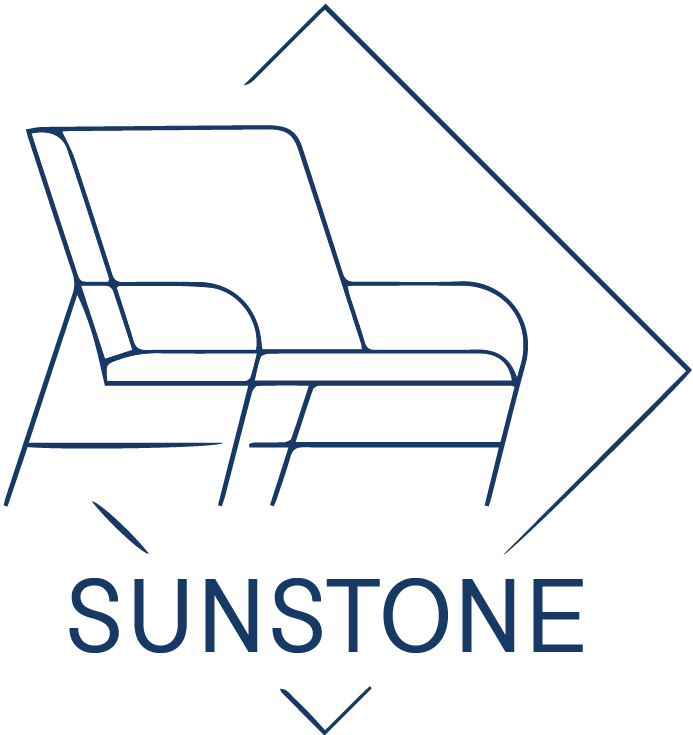How To Clean Mold Off Outdoor Chairs
Outdoor Chairs are constantly exposed to moisture, rain, and humidity — the perfect conditions for mold and mildew to develop. Mold not only leaves dark stains and an unpleasant odor but can also weaken fabric and corrode metal surfaces if left untreated. Learning how to clean mold off outdoor chairs safely and effectively will help you preserve both their appearance and durability for years to come.
Table of Contents
- Understanding Mold Growth on outdoor furniture
- Step 1: Prepare Your Cleaning Area
- Step 2: Mix a Cleaning Solution
- Step 3: Apply and Scrub the Molded Areas
- Step 4: Clean Cushions and Fabrics Separately
- Step 5: Disinfect and Deodorize
- Step 6: Prevent Future Mold Growth
- Material-Specific Mold Tips
- Recommended Outdoor Furniture
- Conclusion
Understanding Mold Growth on outdoor furniture
Mold is a type of fungus that thrives in warm, damp, and shaded environments. Outdoor chairs made of fabric, wicker, or wood are especially vulnerable because these materials retain moisture. Even plastic or metal chairs can develop mold if dirt and organic debris build up on the surface. Regular cleaning and proper drying are essential to stop mold from taking hold.
Step 1: Prepare Your Cleaning Area
Start by moving the chairs to an open, sunny, and well-ventilated space. Cleaning mold indoors can spread spores through the air, so it’s safer to work outside. Wear gloves and a mask to protect yourself from mold exposure. Brush off any loose mold using a soft-bristle brush or a dry cloth. Avoid scrubbing too hard at first, as this can push the mold deeper into porous materials.
Step 2: Mix a Cleaning Solution
You can remove mold using several effective cleaning mixtures depending on your chair material and mold severity:
| Cleaning Solution | Ratio | Suitable For | Notes |
|---|---|---|---|
| White Vinegar + Water | 1:1 | Plastic, Wood, Fabric | Natural and safe for most surfaces |
| Baking Soda + Water | 3 tbsp per cup | Fabric, Plastic | Mild abrasive; removes stains |
| Oxygen Bleach + Water | 1 cup per gallon | Metal, Heavy Mold | Disinfects without fading colors |
| Hydrogen Peroxide | Undiluted | White or Light Fabrics | Kills mold spores and removes odor |
Avoid using chlorine bleach on colored fabrics or painted metal, as it may cause discoloration or corrosion.
Step 3: Apply and Scrub the Molded Areas
Spray your chosen cleaning solution generously over the moldy spots. Let it sit for about 10–15 minutes to penetrate and loosen the mold. Then scrub the area gently with a soft brush or sponge in circular motions. For tough mold patches on metal or plastic, use a nylon brush instead of steel wool to avoid scratching.
After scrubbing, rinse the chair thoroughly with clean water using a garden hose. Ensure all cleaning residues are removed, as leftover chemicals can damage the finish or attract new dirt.
Step 4: Clean Cushions and Fabrics Separately
If your outdoor chairs include cushions or fabric seats, remove them for individual cleaning. For removable cushion covers, machine-wash them in cold water with mild detergent and a cup of white vinegar. If the covers are not removable, mix soap and water in a spray bottle, apply it to the cushion, and scrub gently. Rinse thoroughly and let them dry completely in direct sunlight — the UV rays naturally kill remaining mold spores.
Step 5: Disinfect and Deodorize
After the visible mold is removed, it’s important to eliminate hidden spores and lingering odors. Spray the entire chair with a mixture of equal parts white vinegar and water or use a diluted hydrogen peroxide solution. Allow it to air-dry fully in sunlight. Sunlight is a natural disinfectant that prevents future mold growth by drying out residual moisture.
Step 6: Prevent Future Mold Growth
Once the chairs are clean and dry, take steps to prevent mold from returning:
Store chairs in a dry, ventilated area when not in use.
Use furniture covers that allow air circulation instead of airtight plastic wraps.
Wipe chairs regularly with a damp cloth to remove dirt and organic buildup.
Apply a protective spray or water-repellent treatment on fabric surfaces to resist moisture.
Place chairs in areas with good sunlight exposure whenever possible.
Material-Specific Mold Tips
Plastic Chairs: Clean regularly with vinegar and mild soap. They dry quickly and resist mold well when maintained.
Metal Chairs: Keep them rust-free by applying a corrosion-resistant coating. Moisture on unprotected metal encourages both rust and mold.
Wooden Chairs: Use a wood cleaner and sealant after cleaning. Regular oiling protects wood from absorbing moisture.
Wicker or Rattan: Dry thoroughly after washing. Use a small brush to clean mold hidden in the weaving.
Recommended Outdoor Furniture
For long-lasting and low-maintenance outdoor furniture, Sunstone Outdoor offers a premium selection of aluminum, rattan, and fabric chairs designed to resist moisture and mold growth. Our products feature UV-stabilized coatings, quick-drying cushions, and breathable materials that ensure lasting performance even in humid environments. With minimal upkeep, you can keep your patio or garden looking elegant all year round.
Conclusion
Cleaning mold off outdoor chairs is a straightforward process when done correctly — prepare the surface, use safe cleaning agents, rinse thoroughly, and dry completely. Regular maintenance and proper storage will help prevent mold from returning. By choosing high-quality, mold-resistant outdoor furniture from Sunstone Outdoor, you can enjoy beauty, comfort, and durability with confidence, no matter the season.
Previous: How To Get Rust Off Outdoor Chairs

